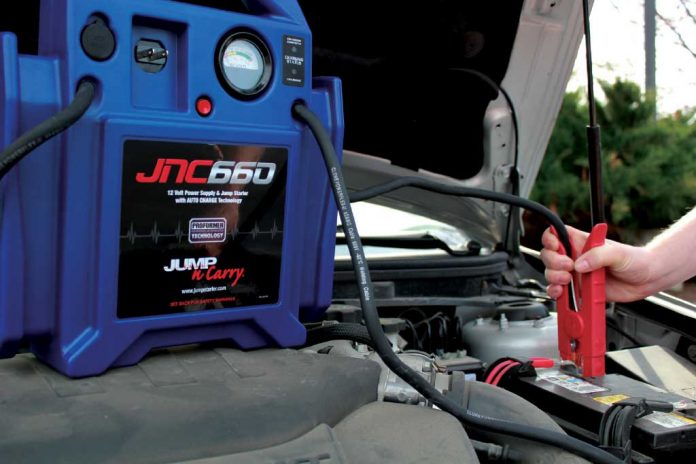When it comes to jump starting, there are a few quick questions to answer to determine what you need: How much power do I need?; How often will I be jump starting?; What kind of access do I require; and, How long do I want the jump starter to last, given my usage patterns?
Power – How Much Do I Need?
This is almost always the first question that comes up. The answer, of course, depends on the types of vehicles you need to start, the weather conditions in which you are jump starting and the condition of the vehicles you will be starting. Suffice it say that the larger the vehicle, the colder them temperature and worse the overall vehicle condition, the more power you will need.
A good rule of thumb is that if you are planning to start gasoline powered passenger vehicles, even in cold weather, a jump starter that can supply 300 Cranking Amps (30 second, 0F, 7.2V or higher terminal voltage) of power should suffice. For diesel powered passenger vehicles, 400 Cranking Amps should get the job done. If you are starting larger diesel powered vehicles, a larger jump starter will be needed.
How Often Will I be Jump Starting?
The more jump starts you expect to perform per day, per week, etc., the more you are going to want to ensure that you have sufficient reserve capacity to meet your usage pattern. Reserve capacity is essentially how deep the well is in the jump starter’s power supply capability. So, you could have two jump starters that are equally rated in Peak Amps or even Cranking Amps, but have different reserve capacities. Running a tow vehicle, reserve capacity is going to be important. You want to be sure your jump starter can work as full a day as you are.
What Kind of Access Do I Require?
After your power equation is determined, the next question is whether any given unit under consideration will provide the access you need. This, again, will be determined by the types of vehicles you will be starting. This is true two ways. On larger vehicles, you are going to want to be sure to have long enough cables to reach the battery / starting points on them, which can often be difficult. In addition, on vehicles with difficult to access batteries, remote starting points often require extend reach to get to a good ground. With remote starting points, you can’t cheat and take both clamps to the battery (which you shouldn’t do, by the way). So, you must get to a good ground with the negative clamp. This often requires 3+ feet of reach, depending on the vehicle.
How Long Do I Want/Require the Jump Starter to Last?
Again, this equation will vary for each user, based on their usage patterns, spend expectations and desire for value / longevity. But, regardless of the spend, everyone wants the products they purchase to last a reasonable length of time. Particularly in a towing operation, which could reasonably be described as an extreme environment, this factor comes into play in a big way. Various products, based on their build method, will stand up in the towing environment better than others.
Built for Jump Starting From the Ground Up
The battery is the most important contributor to jump starter performance. It impacts everything from the jump starter’s maximum boosting capacity, the number of jumps that can be performed per charge, the amount of time that the jump starter can sit between charges, its ability to withstand abuse and the overall service life of the unit. Clore Automotive ES Series (Booster PAC) and Clore PROFORMER (Jump-N-Carry) batteries are specifically developed to perform vehicle jump starting applications. They are designed to deliver exceptional power in a quick, concentrated burst. And have numerous enhancements that serve a single purpose: deliver the power you need, even in extreme conditions, over and over again.
Beyond the battery, it is important to remember that an investment in battery power and reserve capacity isn’t paid off if we can’t get all of that energy to the vehicle. That’s where the Power Path components come into play. These consist primarily of the output cables and battery clamps. Output cables must be sufficiently conductive to deliver the battery’s energy without introducing excessive resistance, which would result in a voltage drop, diminishing the jump starter’s capacity to start the vehicle. The more powerful the battery, the greater the requirement on the output cables. Clore Automotive output cables are specifically mated to the battery power of each jump starter to ensure optimal results. They are extremely durable, flexible in cold temperatures and resistant to vehicle fluids and chemicals.
You work hard. Make sure that when you reach for your jump starter, it is ready to work as hard as you. Downtime is lost revenue. Having a jump starter that you know is going to work every time you grab it is more than peace of mind. It saves time and saves money on the road.






